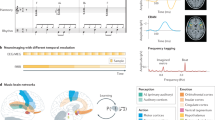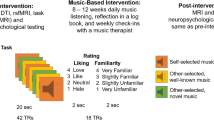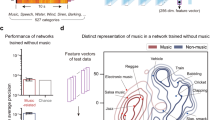Abstract
In adults, specific neural systems with right-hemispheric weighting are necessary to process pitch, melody and harmony, as well as structure and meaning emerging from musical sequences. To which extent does this neural specialization result from exposure to music or from neurobiological predispositions? We used fMRI to measure brain activity in 1 to 3 days old newborns while listening to Western tonal music, and to the same excerpts altered, so as to include tonal violations or dissonance. Music caused predominant right hemisphere activations in primary and higher-order auditory cortex. For altered music, activations were seen in the left inferior frontal cortex and limbic structures. Thus, the newborn's brain is able to plenty receive music and to figure out even small perceptual and structural differences in the music sequences. This neural architecture present at birth provides us the potential to process basic and complex aspects of music, a uniquely human capacity.
Similar content being viewed by others
Article PDF
Author information
Authors and Affiliations
Corresponding author
Rights and permissions
About this article
Cite this article
Perani, D., Saccuman, M., Scifo, P. et al. Music in the first days of life. Nat Prec (2008). https://doi.org/10.1038/npre.2008.2114.1
Received:
Accepted:
Published:
DOI: https://doi.org/10.1038/npre.2008.2114.1
Keywords
This article is cited by
-
Audience reluctance in the face of twentieth century avant-garde music
Rendiconti Lincei (2012)



